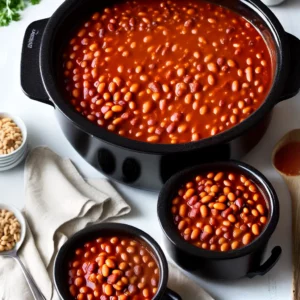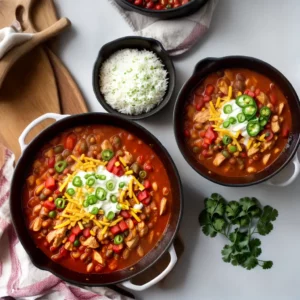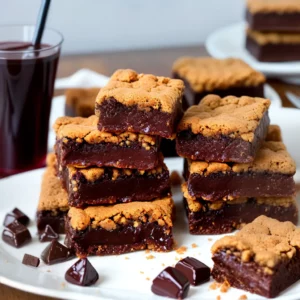Welcome to my article on braising beef! If you’ve ever wondered how to achieve tender, succulent meat with incredible flavor, then you’ve come to the right place. In this guide, I’ll share the techniques and tips you need to master the art of braising beef. Whether you’re a novice cook or a seasoned chef, these insights will help you create mouthwatering dishes that will impress your family and friends.
Key Takeaways:
- Master the technique of browning the meat before cooking to enhance flavor.
- Use the right amount of liquid to prevent dilution and achieve a rich, flavorful sauce.
- Check for tenderness by inserting a fork into the meat. It should glide through effortlessly.
- Keep the meat in its cooking liquid to prevent drying out and preserve its juiciness.
- Choose the best cuts for braising, such as stewing beef cubes or beef shoulder roast, for optimal results.
What is Braising?
Braising is a cooking method that involves slowly simmering tougher cuts of meat in a small amount of liquid. It is a versatile and popular technique that can transform these tougher cuts into fork-tender and flavorful dishes. The name “braising” comes from the French word “braiser,” which originally referred to cooking meat on hot coals. Over time, it has evolved into a slow-cooking method that yields tender and succulent results.
When braising, the meat is first browned in fat, such as oil or butter, to develop a rich flavor and golden color. Then, it is cooked in a covered pot with a small amount of liquid, such as broth, wine, or even water, over low heat. This low and slow cooking process breaks down the collagen, a connective tissue found in the muscles, resulting in tender meat. The collagen dissolves into gelatin, which not only adds richness to the braising liquid but also helps to create a silky texture in the meat.
Braising is not limited to just meat; it can also be used to cook vegetables. The slow cooking process allows the flavors to meld together and creates a depth of flavor that is hard to achieve with other cooking methods. This makes braising a popular technique for preparing dishes such as pot roasts, stews, and even soups. Whether you’re cooking a comforting beef stew or a flavorful vegetable braise, the braising method is sure to deliver mouthwatering results.
Benefits of Braising:
- Results in fork-tender meat
- Develops rich flavors through the browning process
- Creates a silky texture due to the breakdown of collagen
- Allows flavors to meld together for a depth of flavor
- Can be used to cook a variety of meats and vegetables
Quote:
“Braising is a culinary technique that brings out the best in tougher cuts of meat, transforming them into tender and succulent dishes. The slow, low-heat cooking method allows flavors to meld together, resulting in rich and comforting meals.” – Chef John Smith
Table: Popular Cuts for Braising
| Cut | Description |
|---|---|
| Beef Chuck Roast | A flavorful and affordable cut that becomes fork-tender when braised |
| Short Ribs | Tender and marbled meat that braises into a melt-in-your-mouth texture |
| Pork Shoulder | A fatty and flavorful cut that becomes incredibly tender when braised |
| Lamb Shanks | Tough cuts that braise into fall-off-the-bone meat with rich flavors |
How Does Braising Tenderize Meat?
Braising tenderizes meat by breaking down collagen, an elastic connective tissue found in all muscles. Collagen surrounds muscle fibers, providing structure and support. Tough cuts of meat have a higher amount of collagen, making them difficult to chew. When meat is braised, the collagen breaks down into gelatin, resulting in fork-tender meat. The gelatin melts into the braising liquid, adding a velvety richness to the sauce. Braising also allows flavors from the meat to infuse into the braising liquid, creating a flavorful dish.
During the braising process, the meat is cooked slowly in a covered pot with liquid, which helps to break down the collagen and tenderize the muscle fibers. The low and slow cooking method allows the meat to cook at a gentle heat, allowing the collagen to melt and transform into gelatin. This gelatin adds moisture and richness to the meat, making it tender and flavorful.
“Braising is a technique that turns tougher cuts of meat into tender, melt-in-your-mouth goodness. It’s all thanks to the magic of collagen. As the meat cooks low and slow in a covered pot with liquid, the collagen breaks down and transforms into gelatin. This process not only tenderizes the meat but also infuses it with delicious flavors from the braising liquid. The result is a dish that is both succulent and satisfying.”
Table 1: Collagen Breakdown in Braising
| Braising Method | Cooking Time | Collagen Breakdown |
|---|---|---|
| Pressure Cooking | Shorter | Rapid breakdown of collagen due to high temperature |
| Oven or Stovetop | Longer | Gentle breakdown of collagen at a low temperature |
| Slow Cooking | Longest | Slow and steady breakdown of collagen over several hours |
Braising not only tenderizes the meat but also enhances its flavor. The slow cooking process allows the flavors from the meat, seasonings, and braising liquid to meld together, creating a dish that is both delicious and satisfying. The result is fork-tender meat that melts in your mouth and a rich, flavorful sauce that brings the dish to life. So the next time you have a tough cut of meat, consider giving it the braising treatment for a truly indulgent dining experience.
Braising Three Ways
When it comes to braising beef, there are three main methods you can choose from: using a pressure cooker, the oven or stovetop, or a slow cooker. Each method has its advantages and cooking times, so you can select the one that best suits your needs and preferences.
Pressure Cooker:
Using a pressure cooker is a great option if you’re short on time. The higher temperatures inside the pressure cooker break down collagen rapidly, resulting in tender meat in a shorter period. With a pressure cooker, you can achieve perfectly braised meat in as little as 30 minutes, depending on the cut and size of the meat. It’s important to follow the manufacturer’s instructions for your specific pressure cooker model to ensure safe and successful cooking.
Oven or Stovetop:
The oven or stovetop method is the classic way to braise meat. It involves simmering the meat in a covered pot, such as a Dutch oven, over a low temperature. This slow cooking allows the collagen to gradually break down, resulting in tender and flavorful meat. The cooking time for this method varies depending on the size and cut of the meat, but it usually takes around 2 to 3 hours. This method gives you a bit more control and allows you to monitor the progress of your braised beef.
Slow Cooker:
If you prefer a hands-off approach, the slow cooker is a convenient option. The low and slow cooking of a slow cooker results in tender and succulent pieces of meat. Slow cookers provide a gentle heat over a long period, allowing the collagen to soften and break down gradually. Depending on the size and cut of the meat, braising in a slow cooker usually takes 6 to 8 hours, making it perfect for preparing meals while you’re away or overnight. Plus, slow cookers are known for making the meat incredibly tender and juicy.
The Best Cuts for Braising
When it comes to braising, choosing the right cut of meat is essential for achieving tender and flavorful results. Here are some of the best cuts for braising:
- Stewing beef cubes: These small, uniform pieces are perfect for braising as they cook evenly and become melt-in-your-mouth tender.
- Beef blade steak or roast: Cut from the shoulder area, this flavorful and well-marbled cut is ideal for slow cooking and braising.
- Beef shoulder or chuck roast: Known for its rich flavor, this cut is great for pot roasts and stews. It becomes incredibly tender when braised.
- Beef cross rib roast: This cut comes from the shoulder and offers a balance of tenderness and flavor, making it a popular choice for braising.
- Beef brisket: Known for its intense beefy flavor, brisket becomes wonderfully tender when braised low and slow.
- Short ribs: These meaty and succulent cuts are perfect for braising, resulting in fall-off-the-bone tender meat.
Braising these cuts of meat allows their natural flavors to shine through while transforming them into fork-tender masterpieces. Whether you’re preparing a comforting stew or a flavorful pot roast, these cuts are sure to impress.
“Braising these cuts of meat allows their natural flavors to shine through while transforming them into fork-tender masterpieces.”
With their affordability and ability to turn tough cuts into tender delights, these cuts are highly recommended for any braising recipe. So, the next time you’re at the grocery store or talking to your butcher, don’t forget to pick up one of these fantastic cuts for your next braising adventure.
| Cut | Description |
|---|---|
| Stewing beef cubes | Small, uniform pieces that cook evenly and become melt-in-your-mouth tender. |
| Beef blade steak or roast | Well-marbled and flavorful cut from the shoulder area, perfect for slow cooking and braising. |
| Beef shoulder or chuck roast | Rich in flavor and great for pot roasts and stews, becoming incredibly tender when braised. |
| Beef cross rib roast | Shoulder cut that offers a balance of tenderness and flavor, making it a popular choice for braising. |
| Beef brisket | Intensely beefy in flavor, brisket becomes wonderfully tender when braised low and slow. |
| Short ribs | Meaty and succulent, these cuts are perfect for braising, resulting in fall-off-the-bone tender meat. |
So, whether you’re creating a classic beef stew or experimenting with new braising recipes, these cuts are sure to deliver incredible flavor and texture. Give them a try and enjoy the mouthwatering results of your braising endeavors.
Four Tips for a Successful Meat Stew
Braising meat to perfection requires attention to detail and a few essential tricks. Here are four tips that will help you create a mouthwatering meat stew:
Browning the Meat
Achieving a rich and flavorful stew starts with browning the meat before braising. This step adds depth and complexity to the final dish. To ensure a beautiful sear, pat the meat dry with a paper towel to remove excess moisture. Heat oil in a hot pan and add the meat in a single layer, giving each piece enough space to brown evenly. Allow the meat to develop a deep dark brown crust on all sides, which will enhance the overall taste of the stew.
Gauging the Liquid
Getting the right balance of liquid is crucial for a well-rounded stew. Using too much liquid can lead to a diluted flavor, while using too little can result in a dry and burnt dish. As a general rule, add enough liquid to come halfway up the meat. As the meat cooks, it will release juices that will contribute to the braising liquid. This will concentrate the flavors and help thicken the sauce. If the sauce is too thin at the end of the cooking process, you can reduce it in an uncovered pot on the stovetop until it reaches the desired thickness.
Avoiding Overcooking
One common mistake when braising meat is overcooking it. To prevent this, periodically check the meat for tenderness. When the meat is easily pierced with a fork and pulls apart without resistance, it is done. Remember that overcooking can result in dry and stringy meat, so keep a close eye on the cooking time. If the meat is not yet tender, continue braising until it reaches the desired texture.
Keeping it Saucy
A flavorful stew should have a rich and velvety sauce. To achieve this, it’s important to keep the meat in its cooking liquid. This prevents the meat from drying out and allows it to reabsorb some of the flavors as it rests. Braised dishes often taste even better the next day as the meat continues to soak up the sauce. To ensure a saucy stew, serve it with a generous amount of the cooking liquid and allow the flavors to meld together for a few minutes before enjoying.
These four tips will set you on the path to creating a successful meat stew. Remember to brown the meat for enhanced flavor, gauge the liquid carefully to strike the perfect balance, avoid overcooking for tender and succulent results, and keep the stew saucy to delight your taste buds. With these suggestions in mind, you’ll be able to craft a delicious and satisfying dish that will impress family and friends time and time again.
Braising Techniques for Perfect Results
When it comes to braising beef for perfect results, there are a few key techniques to keep in mind. These techniques will enhance the flavor and tenderness of your braised meat, ensuring a delicious and satisfying dish.
Seasoning and Marinating:
Seasoning your beef with salt and pepper is a simple yet effective way to enhance its natural flavors. You can also marinate the beef in your choice of seasonings, such as herbs, spices, and marinades, to infuse it with additional flavor. Letting the beef marinate for at least a few hours, or overnight, will result in a more flavorful and tender final dish.
Browning and Deglazing:
Browning the beef before braising is a crucial step that adds depth and richness to the dish. Heat oil in a hot pan and sear the beef until it develops a deep golden brown color. This process triggers the Maillard reaction, enhancing the taste and texture of the meat. After browning, deglaze the pan with wine, broth, or another liquid to scrape up the flavorful brown bits from the bottom. This adds complexity and richness to the braising liquid and sauce.
Reducing and Sauces:
After braising, you can reduce the braising liquid to create a thick and flavorful sauce. Simmer the liquid on the stovetop until it has thickened and concentrated in flavor. This reduction process intensifies the flavors and creates a velvety sauce to complement the tender meat. Remember to let the braised meat rest in the sauce for a few minutes before serving, allowing the flavors to meld together.
By following these braising techniques – seasoning and marinating, browning and deglazing, reducing and creating flavorful sauces, you can achieve perfect results every time. These methods will enhance the flavor and tenderness of your braised beef, creating a mouthwatering and satisfying meal.
Cooking Temperatures for Braising
When it comes to braising, temperature control is key to achieving tender and flavorful results. The cooking temperature should be kept low and gentle, never reaching a boiling point. This allows the collagen in the meat to slowly break down, resulting in succulent and fork-tender meat.
Maintaining a low heat between 185°F (85°C) and 195°F (90°C) is ideal for braising. This gentle heat ensures that the meat cooks slowly and evenly, allowing the flavors to develop and intensify. It’s important to avoid high heat, as this can cause the meat to become tough and overcooked.
Simmering is the preferred method for braising, as it keeps the temperature constant and prevents the sauce from boiling. Simmering occurs at a temperature just below boiling, around 180°F (82°C). This low simmer allows the flavors to meld together and the collagen to gradually soften, resulting in tender and flavorful meat.
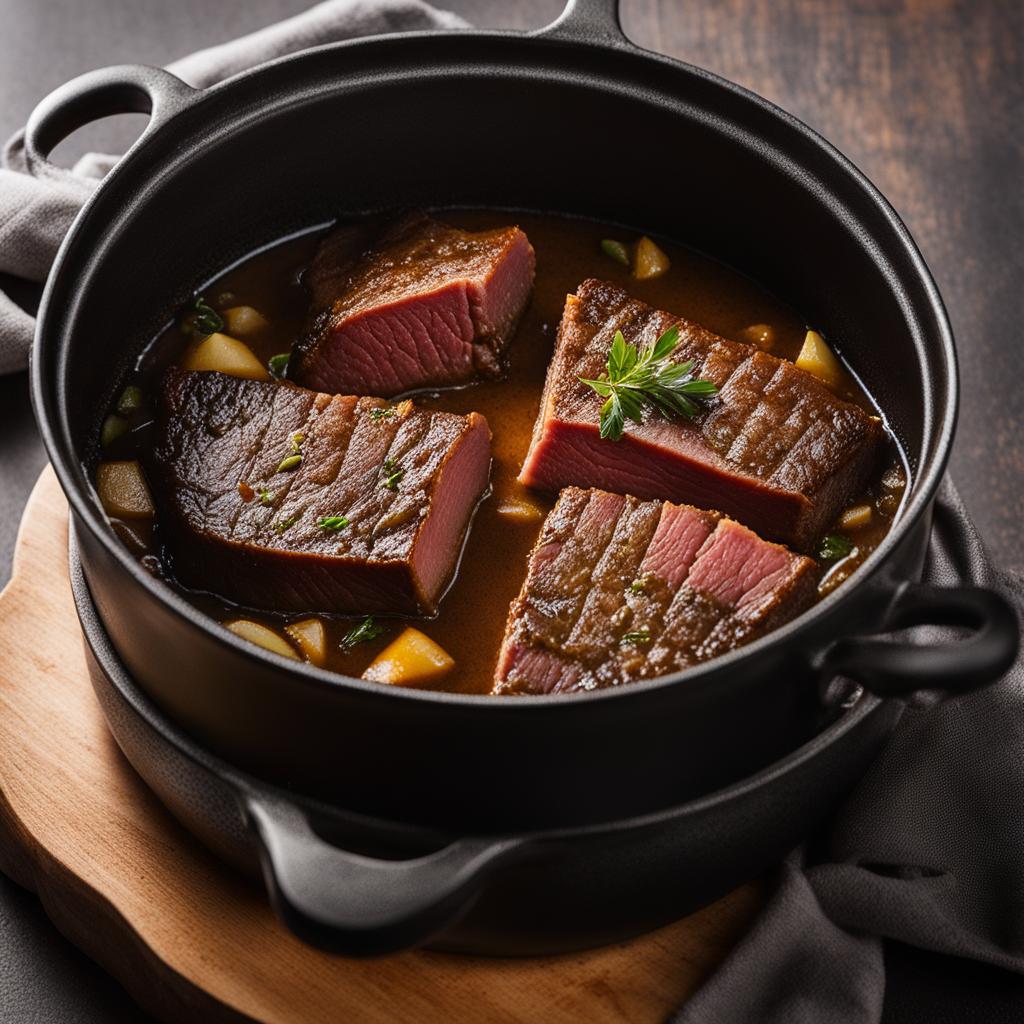
Cooking Temperatures for Braising:
| Cooking Method | Temperature Range |
|---|---|
| Low Heat | 185°F – 195°F (85°C – 90°C) |
| Simmering | Just below boiling, around 180°F (82°C) |
By maintaining a low and gentle heat while braising, you can ensure that your meat turns out tender, flavorful, and melt-in-your-mouth delicious. Remember to always monitor the temperature and adjust accordingly to achieve perfect results.
The Benefits of Pressure Cooking for Braising
When it comes to braising meat, traditional methods like oven or stovetop cooking and slow cooking have long been popular choices. However, there is another technique that is gaining recognition for its quick and efficient results: pressure cooking. With its high temperature and fast cooking time, pressure cooking offers several benefits for tenderizing meat.
One of the main advantages of pressure cooking is its ability to quickly tenderize meat. The high temperature in a pressure cooker, typically around 250°F (120°C), breaks down collagen rapidly, resulting in tender and succulent meat. This makes pressure cooking a great option for cuts of meat that usually take longer to braise, such as beef stewing cubes. In as little as 15 minutes, you can achieve fork-tender meat with the help of a pressure cooker.
“The high temperature in a pressure cooker, typically around 250°F (120°C), breaks down collagen rapidly, resulting in tender and succulent meat.”
While pressure cooking offers the advantage of quick cooking, it’s important to note that the meat may be slightly drier compared to traditional braising methods. The high temperature in a pressure cooker can cause some juice loss, resulting in meat that is a bit less succulent. However, with the right amount of liquid and careful monitoring, you can still achieve delicious and tender meat using a pressure cooker.
If you’re short on time and looking for a convenient way to tenderize tough cuts of meat, the pressure cooking method is worth considering. With its quick cooking time and high temperature, pressure cooking can help you achieve tender and flavorful results in a fraction of the time.
Oven or Stovetop: The Classic Braising Method
When it comes to braising, the oven or stovetop method is a classic choice that delivers delicious results. This technique involves simmering the meat and vegetables in a covered pot, such as a Dutch oven, over low heat. The even heat distribution and retention of a Dutch oven ensure that the meat cooks evenly and becomes tender and flavorful.
The key to successful braising on the stovetop or in the oven is to keep the temperature just below boiling, typically between 185°F (85°C) and 195°F (90°C). This gentle heat allows the collagen in the meat to slowly break down, resulting in fork-tender meat that easily pulls apart.
The cooking time for braising in the oven or on the stovetop can vary depending on the size of the meat, but it generally takes around two to three hours to achieve the desired tenderness. It’s essential to choose a pot with a tight-fitting lid to ensure that moisture and flavors are retained during the cooking process.
Why Choose the Oven or Stovetop Method?
There are several reasons why the oven or stovetop method is a popular choice for braising. First, the even heat distribution in a Dutch oven ensures that the meat cooks uniformly, preventing any uneven cooking or hotspots. This results in tender and succulent pieces of meat that are full of flavor.
Second, braising in a covered pot helps to retain moisture, preventing the meat from drying out during the cooking process. The steam created within the pot keeps the meat moist and tender, resulting in a more enjoyable eating experience.
Lastly, the oven or stovetop method allows for easier temperature control. Unlike a slow cooker, which operates at a consistent temperature, the oven or stovetop allows you to adjust the heat as needed. This flexibility ensures that you can maintain the ideal temperature for braising, resulting in perfectly cooked meat every time.
Slow Cooker: The Hands-Off Approach to Braising
When it comes to braising meat, the slow cooker is a game-changer. Its low and slow cooking method ensures that the meat turns out tender and succulent every time. With a long cooking time, the slow cooker allows the collagen in the meat to break down, resulting in melt-in-your-mouth pieces that are full of flavor.
The beauty of the slow cooker lies in its convenience. You can simply set it and forget it, allowing the meat to cook slowly and evenly while you go about your day. Whether you’re preparing a large cut of meat or want a hands-off approach to braising, the slow cooker is the perfect tool.
Table: Comparison of Braising Methods
| Braising Method | Cooking Time | Tender Meat | Succulent Pieces |
|---|---|---|---|
| Pressure Cooking | 15-30 minutes | Yes | No |
| Oven or Stovetop | 2-3 hours | Yes | Yes |
| Slow Cooker | 6-8 hours | Yes | Yes |
So if you’re looking for a method that requires minimal effort and delivers delicious results, the slow cooker is the way to go. Its long cooking time ensures that the meat becomes fork-tender, while the low temperature keeps it juicy and flavorful. With the slow cooker, you can enjoy the taste of braised meat without spending hours in the kitchen.
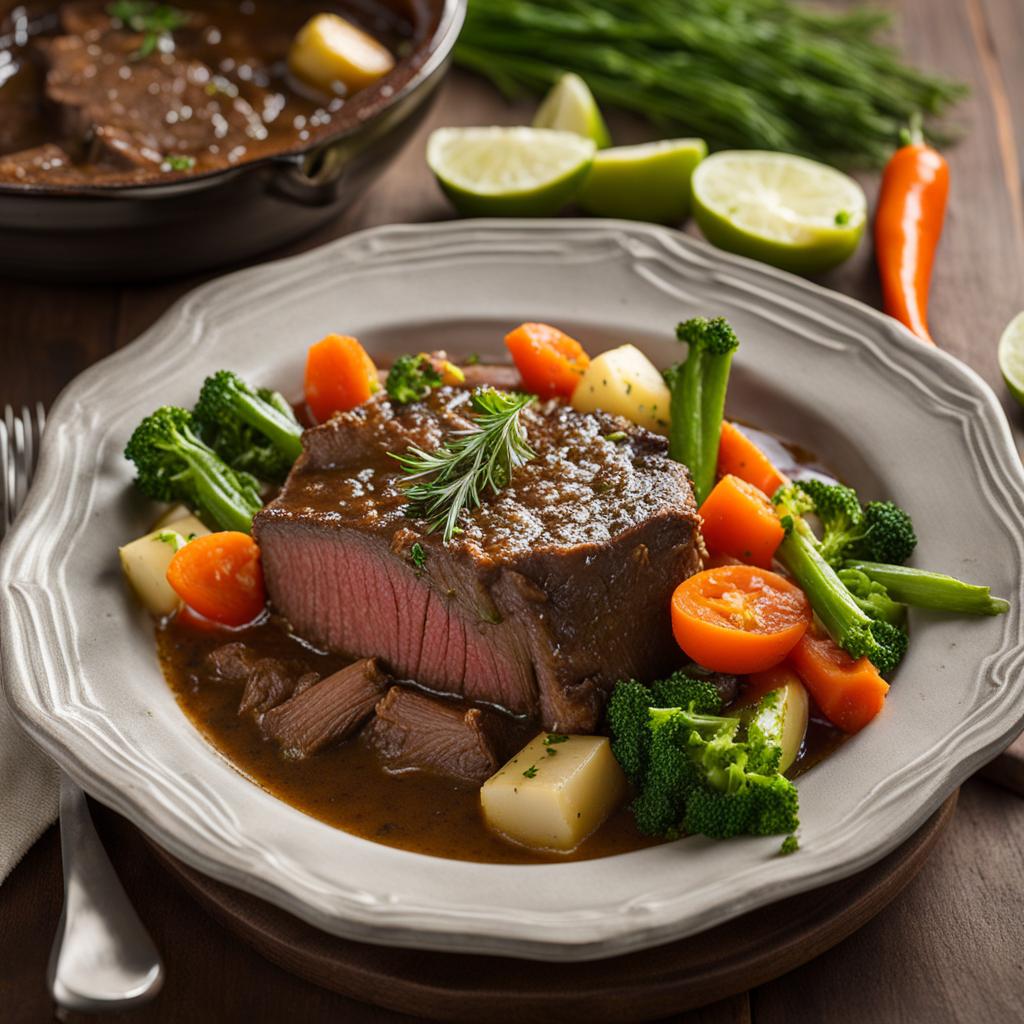
With the slow cooker, you can effortlessly create mouthwatering dishes that will impress your family and friends. Whether you’re cooking stewing cubes, beef brisket, or short ribs, the slow cooker will transform tough cuts of meat into a tender and flavorful feast. Just set it, forget it, and let the slow cooker work its magic. Your taste buds will thank you!
Tips for Browning Meat Before Braising
When it comes to braising beef, browning the meat before cooking is a crucial step that shouldn’t be skipped. Not only does it enhance the flavor and color of the meat, but it also adds depth and complexity to your final dish. To achieve that beautiful sear and unlock the full potential of your beef, follow these tips:
- Pat the meat dry: Before adding the beef to a hot pan, make sure to pat it dry with a paper towel. Removing excess moisture helps in achieving a better sear and prevents steaming of the meat.
- Use a hot pan: Heat your pan over medium-high heat until it’s hot. Adding the meat to a hot pan ensures a good sear and caramelization.
- Don’t overcrowd the pan: It’s important to give the meat enough space to brown properly. Overcrowding the pan can lead to steaming instead of searing.
- Let it develop a deep brown color: Allow the meat to cook undisturbed for a few minutes on each side until it develops a deep brown crust. This is where the Maillard reaction takes place, creating complex flavors and aromas.
“Browning the meat before braising triggers the Maillard reaction, resulting in enhanced flavor and color.”
Browning the meat before braising is a simple yet effective technique that can elevate your dishes to new heights. The combination of the Maillard reaction and caramelization adds layers of flavor that will leave your taste buds craving for more. So, take the time to brown your meat and enjoy the delicious results!
How to Gauge the Liquid for Braising
When it comes to braising, getting the liquid ratio just right is key to achieving a delicious and flavorful result. The amount of liquid you use will affect the concentration of flavors and the thickness of your sauce. Here are some tips to help you gauge the liquid for braising:
- Add enough liquid to come halfway up the meat: This ensures that the meat stays moist and tender while cooking. As the meat cooks, it will release juices into the braising liquid, which will further enhance the flavor.
- Be mindful of dilution: Using too much liquid can dilute the flavors of your braising liquid and result in a weak sauce. It’s best to add just enough liquid to create a rich and flavorful base for your dish.
- Consider reducing the sauce: If your braising liquid is too thin at the end of cooking, you can reduce it in an uncovered pot on the stovetop. This will help thicken the sauce and intensify the flavors.
By following these tips, you’ll be able to gauge the liquid for braising and create a delicious, flavorful sauce that complements your tender meat perfectly.
Table: Braising Liquid Ratios for Common Ingredients
| Ingredient | Liquid Ratio |
|---|---|
| Beef | 1:1 (meat to liquid) |
| Chicken | 1:1 (meat to liquid) |
| Pork | 1:1 (meat to liquid) |
| Lamb | 1:1 (meat to liquid) |
| Vegetables | 1:2 (vegetables to liquid) |
Keep in mind that these ratios are general guidelines and can be adjusted based on personal preference. Additionally, the cooking time and temperature may vary depending on the specific recipe and cut of meat or vegetables you are using. It’s always a good idea to refer to a trusted recipe or consult with a professional chef for more precise instructions.
Conclusion
Braising beef is a wonderful technique that can transform tougher cuts of meat into tender and flavorful dishes. By following these tips and techniques, you can achieve perfect results every time you braise beef.
First, make sure to brown the meat before cooking. This step adds depth of flavor and richness to the final dish. The caramelization and Maillard reaction that occur during browning create delicious flavors that will enhance your braised beef.
Next, remember to use the right amount of liquid. Adding just enough liquid to come halfway up the meat ensures that the flavors concentrate and the sauce thickens as the meat cooks. This will result in a robust and flavorful dish.
Lastly, check for tenderness throughout the cooking process. Braising times can vary depending on the method used and the size of the meat, so it’s important to periodically check if the meat is fork-tender. Overcooking the meat can result in dry and stringy texture, so be mindful of the cooking time.
With these techniques and tips in mind, you’ll be well-equipped to braise beef like a pro. So go ahead, get into the kitchen, and enjoy the delicious, melt-in-your-mouth results of your braising endeavors.
FAQ
What is braising?
Braising is a cooking method that involves slowly simmering tougher cuts of meat in a small amount of liquid.
How does braising tenderize meat?
Braising tenderizes meat by breaking down collagen, an elastic connective tissue found in all muscles.
What are the three main methods for braising meat?
The three main methods for braising meat are pressure cooking, oven or stovetop, and slow cooking.
What are the best cuts for braising?
Some of the best cuts for braising include stewing beef cubes, beef blade steak or roast, beef shoulder or chuck roast, beef cross rib roast, beef brisket, and short ribs.
What are four tips for a successful meat stew?
Four tips for a successful meat stew are browning the meat before braising, using the right amount of liquid, checking for tenderness, and keeping the meat in its cooking liquid.
What are some braising techniques for perfect results?
Some braising techniques for perfect results include seasoning the meat, browning it before braising, deglazing the pot, reducing the braising liquid, and letting the meat rest in the sauce.
What are the cooking temperatures for braising?
The cooking temperatures for braising should be kept below boiling, ideally between 185°F and 195°F.
What are the benefits of pressure cooking for braising?
The benefits of pressure cooking for braising include quick cooking, high temperature, and tenderizing the meat.
What is the classic braising method using the oven or stovetop?
The classic braising method using the oven or stovetop involves simmering the meat in a covered pot at a low temperature for a longer period.
What is the hands-off approach to braising using a slow cooker?
The hands-off approach to braising using a slow cooker involves low and slow cooking, resulting in tender and succulent meat.
What are tips for browning meat before braising?
Tips for browning meat before braising include searing it in a hot pan, patting it dry, and avoiding overcrowding the pan.
How to gauge the liquid for braising?
To gauge the liquid for braising, add enough liquid to come halfway up the meat, allowing the meat to release moisture as it cooks.
What is braising beef?
Braising beef is a cooking technique that involves slowly simmering tougher cuts of meat in a small amount of liquid until it becomes tender and flavorful.
Source Links
- https://chatelaine.com/food/kitchen-tips/how-to-braise-meat/
- https://www.ricardocuisine.com/en/articles/food-chemistry/643-how-to-perfect-the-art-of-braising
- https://www.foodnetwork.com/how-to/articles/how-to-braise-meats-a-step-by-step-guide
Related Recipes:
 Best Beef Cuts for Braising: Tips and Tricks
Best Beef Cuts for Braising: Tips and Tricks
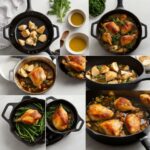 How to Braise Chicken: A Step-by-Step Guide
How to Braise Chicken: A Step-by-Step Guide
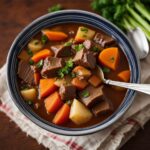 Beef Stew Shelf Life: How Long Does It Last in the Fridge?
Beef Stew Shelf Life: How Long Does It Last in the Fridge?
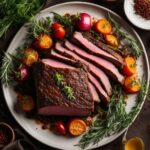 How to Cook Bottom Round Roast (Easy Step-by-Step Guide)
How to Cook Bottom Round Roast (Easy Step-by-Step Guide)
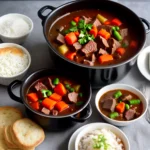 Kelly’s Pressure Cooker Beef Stew
Kelly’s Pressure Cooker Beef Stew
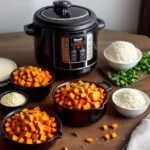 Pressure Cooker Sweet Potatoes
Pressure Cooker Sweet Potatoes
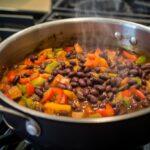 How to Cook Black Beans? (Perfect Step-By-Step Guide)
How to Cook Black Beans? (Perfect Step-By-Step Guide)
 How to Make Greek Yogurt (No Special Equipment)
How to Make Greek Yogurt (No Special Equipment)



